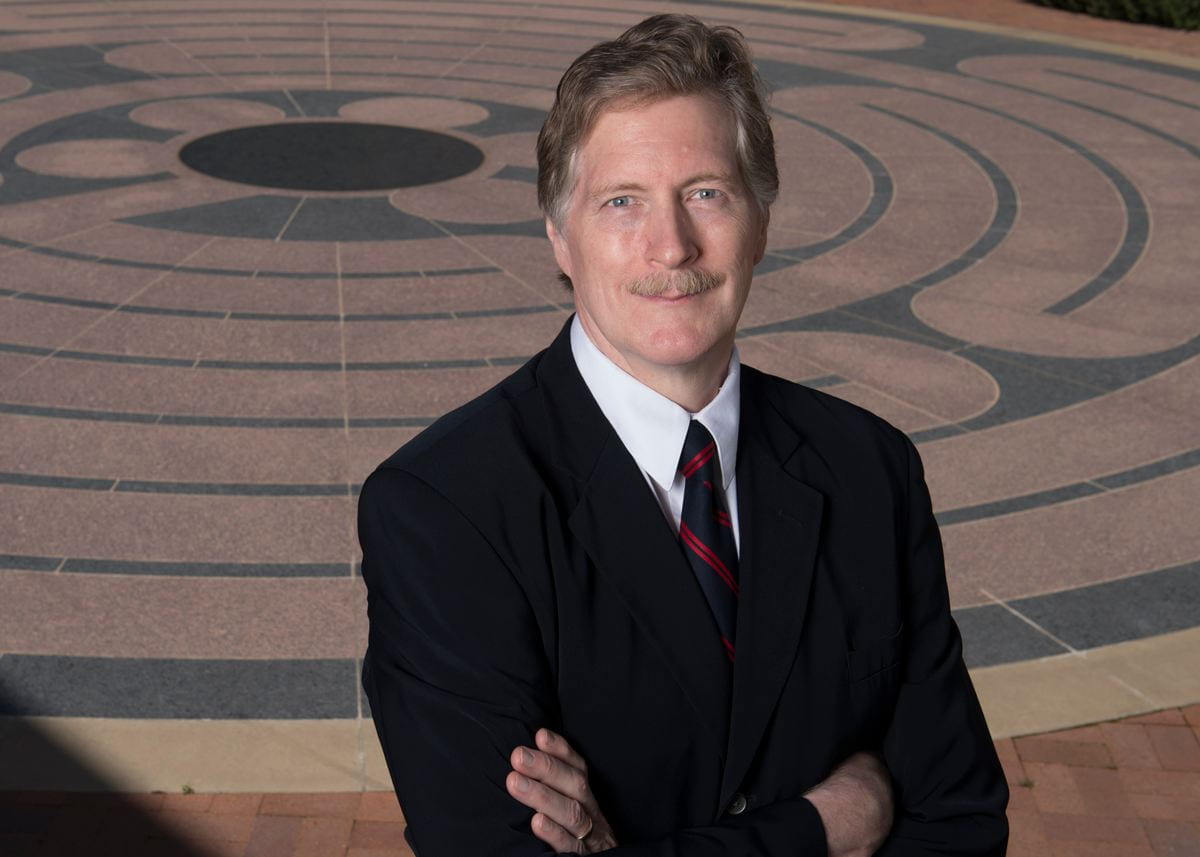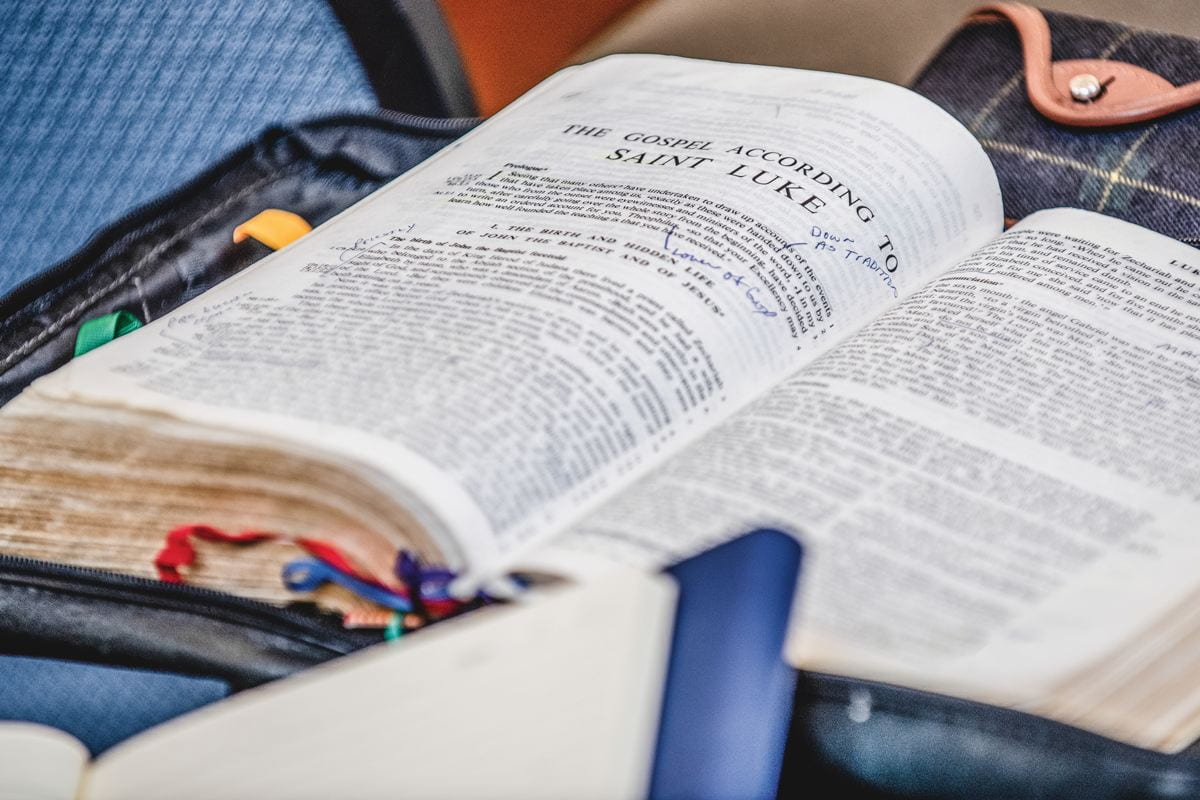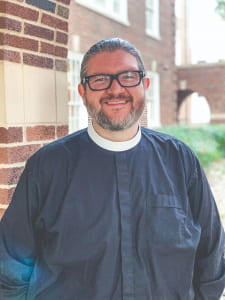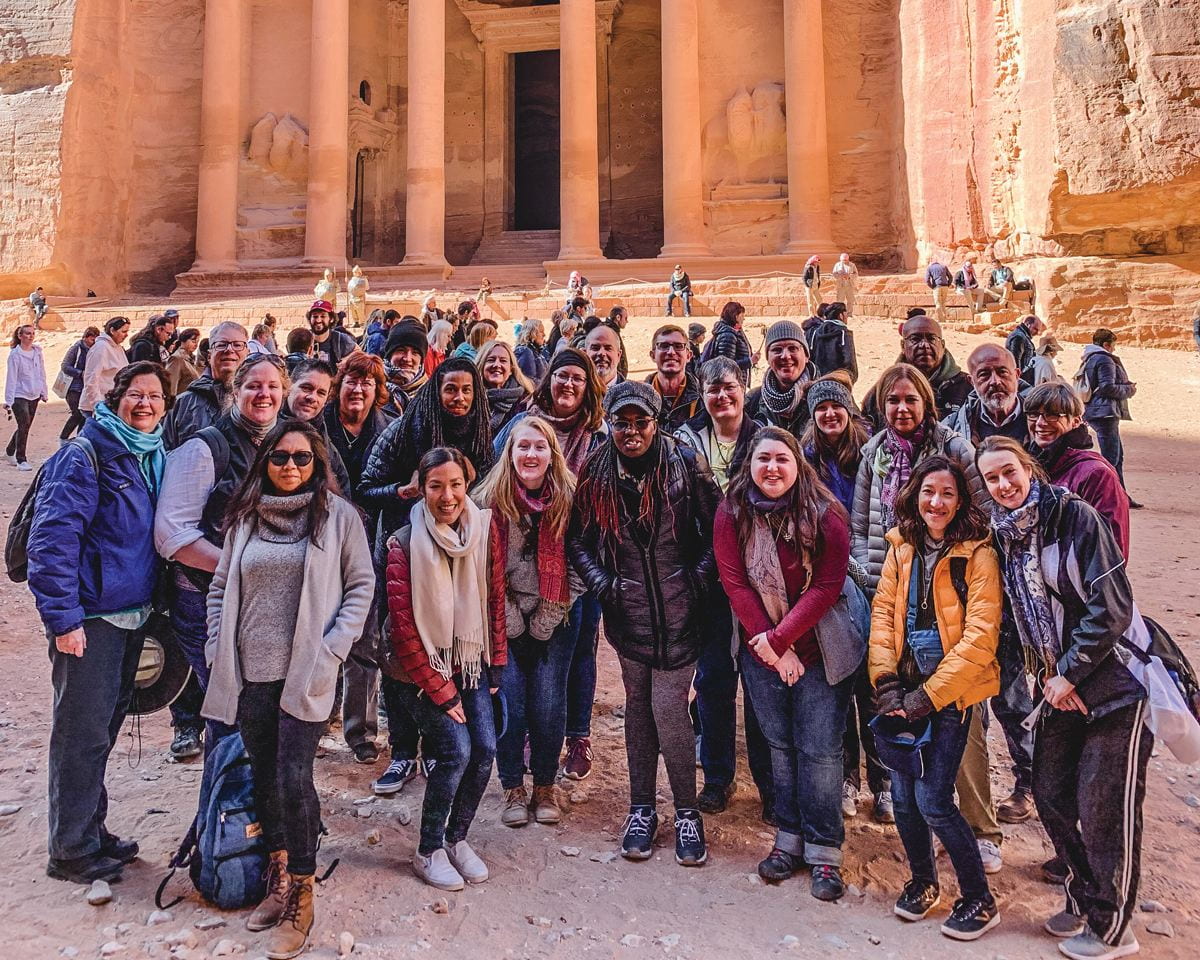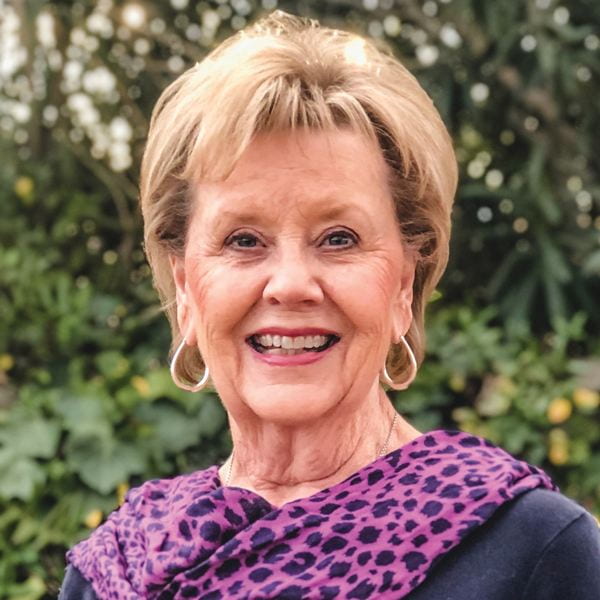By Dean Craig C. Hill
How should we think about the Bible? Our answer to that question is foundational to a great many other questions and so is deserving of serious attention.
During my freshman year of high school, the evangelist Leighton Ford conducted a crusade at our local armory, one result of which was the founding of a Christian coffeehouse called The Lighter Side of Darkness. “Lighter Side” was a perfect early-70s period piece, complete with purple walls, cushions for seats and empty wire spools for tables. (The practice of referring to it by its initials, LSD, did little to endear it to already suspicious parents.) It was like nothing that I had ever experienced. The confident faith, joyous worship and sheer drama of the place (one leader was a former drug dealer with reputed mob ties) overshadowed anything I had witnessed at my United Methodist Youth Fellowship.
The principal activity at Lighter Side was Bible study. One of the coffeehouse “elders,” a fellow in his early twenties, would lead us through a passage or a series of verses. The unstated assumption was that Christians believed everything the Bible taught without qualification or equivocation. It was easy.
I recall the day that it got difficult. I was reading a portion of Matthew’s Gospel, and, noting the cross reference in my Thompson’s Chain Bible, I turned to the parallel account in Luke. I was surprised to find significant differences between the two versions. No interpretive contortion, and by then I possessed an extensive repertoire, seemed capable of reconciling the details of the two accounts. Unsettled, I phoned one of the elders for guidance. I explained the conundrum, but he too was unable to fashion a satisfactory solution. “So, what do you do when you encounter this sort of problem?” I asked. His answer: “I just try not to think about it.” That was advice that I could not take. Too much was at stake.
Three theological degrees and even more decades later, I am still a Christian. The core of my faith has not changed all that substantially, but my understanding of the Bible has. In this short space, I want to outline what I think is a reasonable and faithful alternative to inerrancy (the Bible contains no contradictions, historical inaccuracies or other such difficulties) that nevertheless recognizes Scripture’s immeasurable value and unique role.
We start by considering the distinction between deductive and inductive reasoning. Deductive thinking involves the application of a general truth to specific situations. Let us say that the general truth is the excellence of my wife’s memory, for which I am perhaps not as grateful as I should be! Were Robin to inform me that I have a doctor’s appointment at 3 p.m. tomorrow, I would not phone the physician’s office for confirmation. I know that she has a reliable memory; therefore, I deduce that she is accurate in this instance.
Inductive reasoning works in the opposite direction, from the specific to the general. When I first met Robin, I had no idea that she was gifted with a good memory.
Over time – through often embarrassing experiences – it became clear that her memory was superior to mine and ought to be trusted. In the process, I formulated a general truth: Robin has an excellent memory.
People who believe in biblical inerrancy tend to think deductively about the Bible. The general truth is God, who is perfect and all powerful. What sort of book would such a God “write”? One that is without error, since it is God’s nature to be perfect, and it is in God’s power to produce a perfect result. If we then turn to specific texts, for example, to the dozens of stories found in all three of the Synoptic Gospels (Matthew, Mark and Luke), what are we to make of their apparent differences? Since this is a perfect book, we know in advance that no actual discrepancies can exist. Case closed.
The argument is bolstered by an appeal to the King James translation of 2 Timothy 3:16: “All Scripture is given by inspiration of God, and is profitable for doctrine, for reproof, for correction, for instruction in righteousness.” Without entering into a complicated argument about Greek syntax, let me note that much has been read into this verse that is not there. The most probable translation puts verses 15 and 16 in parallel:
15: “the sacred writings which are able to make you wise unto salvation …
16: All inspired writings are also profitable for teaching …
The passage upholds the usefulness of the Hebrew Bible, the early church’s Scripture, not only for evangelism but also for Christian teaching and admonition. The word theopneustos, “inspired” or “God breathed/blown,” was used elsewhere (e.g., in Plutarch with reference to dreams) as a claim of divine origin without specifying the manner of origination, e.g., “dictated” by God.
It is instructive to study the actual practice of the New Testament authors. Paul, for one, was extraordinarily free in his use of the Hebrew Bible. In many of his 89 biblical quotations, the original text is reworded to suit his argument, sometimes greatly altering its original meaning.1 A similar problem is evident in the New Testament’s reliance on the Septuagint, the Greek translation of the Old Testament, sometimes at points where the text differs substantially from the original Hebrew.2 Which Old Testament is inerrant, the original or the version quoted by the New Testament?
One admirable aspect of this way of thinking is the seriousness with which it takes the Bible. Indeed, the Bible may be regarded as the very Word of God, a title borrowed from prophecy (e.g., Isaiah 1:10: “Hear the word of the Lord …”) and generalized to include all Scripture. It should be noted that the Bible contains many types of literature, only a fraction of which could be described literally as “Word of God” speech. I shall never forget being in a worship service in which Psalm 137 was read, which ends, “Happy shall he be who requites you … Happy shall he be who takes your little ones and dashes them against the rock!” True to form, the pastor then said, “This is the word of the Lord,” to which the congregation dumbfoundedly responded, “Thanks be to God!”
The seeming clarity of this viewpoint is appealing. “God said it. I believe it. That settles it.” By comparison, other approaches are dismissed as hopelessly complex and irredeemably subjective. Many defenses of inerrancy boil down to the sentiment that it must be true because God, being God, would not have left us in such an otherwise dicey situation.
Looking at the above diagram, it is understandable that so much energy is expended in defense of inerrancy. Logically, the smallest biblical discrepancy would impugn the very character of God. Did Jesus cleanse the temple near the beginning of his ministry (John) or near the end (the Synoptics)? By this reasoning, he must have done it twice – that, or God is imperfect. One could go on and on enumerating such difficulties. The point is that this is a gloriously imposing yet exceedingly fragile construction. All is at stake in every part; as with a balloon, the tiniest puncture threatens annihilation.
On one level, there is no point in debating. The idea is thoroughly circular; its conclusions are written into its premises. All contrary evidence is ruled out in advance. Unless one is willing at some point to think inductively, to weigh and to test evidence, the general truth is unassailable. It reminds me of the story of the man who was convinced that he was dead. His attitude distressed family members, who eventually enlisted a psychiatrist. After several fruitless sessions, the psychiatrist landed on what he thought was a solution. He asked the man, “Do dead people bleed?” “No,” the fellow answered, “dead people do not bleed.” The doctor then pricked the man’s finger, which bled profusely. “I’ll be,” said the man. “Dead people bleed!”
At best, this way of thinking produces confident disciples. At worst, it sets those same disciples up for a fall. I took a religion class in college in which the professor walked us through a number of the Bible’s most problematic texts. The exercise was devastating for some of my classmates. Others fought back, resourcefully defending the Bible. Ironically, however, both responses originated in the same mind-set, based on the conviction that belief in Christ is inseparable from belief in inerrancy.
For me, the issue was on the table and would not go away. Only after years of study could I admit that my view of the Bible did a poor job of actually accounting for the Bible. In passage after passage, I saw that otherwise intractable problems disappeared if only I would admit that human authors in particular historical settings with specific theological concerns had composed them. Let me offer just one of literally hundreds of examples.
Mark 6:1-6 records the story of Jesus’ rejection in the synagogue at Nazareth. Matthew tells the same story at the same location (13:54-58) with only minor variations, but Luke puts the story elsewhere, not in the middle but at the very beginning of Jesus’ public ministry (4:16-30). An interesting consequence is the disciples’ absence; in Luke, they have not yet been called. One could harmonize all three accounts only by fudging significant details in each. One could say that the event occurred twice, but that is hardly likely. But if we look at the story from the point of view of Luke’s historical situation and purpose, everything falls neatly into place. In all likelihood, Luke has moved the story to the beginning of Jesus’ ministry because he wanted it to serve a paradigmatic function. Note the addition of vv. 17-21, the reading from Isaiah 61 that serves as Jesus’ “job description” throughout this Gospel. Contrary to Matthew and Mark, the people at first received Jesus’ words with gladness (v. 22). Their rejection came later, only after Jesus had spoken of God’s favor toward the Gentiles (vv. 25-30), another detail found only in Luke. In fact, Jewish rejection and Gentile acceptance are two of Luke’s central concerns,3 so it makes perfect sense that he told the story in this way. Nothing could be more Lukan (see Luke 2:25-35). To fret over the historical differences between this account and that found in Matthew and Mark is to miss the point entirely.
One shelf in my office is given to books that attempt to explain away such difficulties. It is instructive reading. One of the largest volumes purports to examine every significant discrepancy. That is a startling claim since the author missed 10 difficulties for every one he spotted. The truth is that most of us read the Bible devotionally. We come to it to find solutions, not problems, so it is understandable if we fail to notice, for example, that Jesus sent out the Twelve with “nothing … except a staff” in Mark 6:8 but with “no staff” in Luke 9:3.
Do such problems mean that the Bible cannot be trusted, that it is false? Some jump to this conclusion, but that is by no means necessary. If the Bible disappoints us, it is probably more because of our inappropriate expectations than because of its limitations. The Bible is a powerful, precious and irreplaceable witness to Jesus Christ, but it is not itself a proper object of our faith.
Of course, this is my own statement of general truth arrived at by inductive reasoning, by beginning with the particular and then moving to the general. In this model, the study of individual texts eventually leads one to formulate opinions about the Bible. This allows one to ask open-ended questions. It does not presuppose a result to which the Bible must be made to conform, and it is not threatened by problems. That does not mean that it requires that there be difficulties; in practice, persons can be found using this approach across a considerable theological spectrum. Of course, that breadth of interpretive possibility raises the specter of subjectivity. What is to stop me from finding only what I want and constructing a god to suit my purposes? Are we not venturing out onto the slippery slope of relativism?
The short answer is that all of us, including inerrantists, are already there. None of us can escape entirely the historical situation in which we are located. Each of us comes to the text with a prior understanding of reality, with assumptions about what is true and what is possible, with unexamined self-interest and unacknowledged self-limitation. Having made this admission up front, we have the chance to construct a system of interpretive checks and balances that tests our individual readings against those of others within the broader communities of faith and learning, both across cultures and through time.
The Protestant Reformers were right to insist that the whole counsel of Scripture ought to be consulted, but their dictum “Scripture interprets Scripture” all too easily becomes a license for harmonizing according to one’s prejudices. How often have we selected the biblical view that we prefer and then used it as the key for interpreting out of existence the views with which we disagree? Challenging or controversial texts are dodged; in the process, the theological distinctiveness and integrity of individual biblical authors are lost.
There is no uniform biblical view of, for example, the place of the law or the role of women. That can be frustrating, to be sure, but it is not the impossible obstacle some imagine. In practice if not in principle, even the most “literal” of biblical interpreters manage to navigate safe passage around these problems. Of course, it is better to make such interpretive choices consciously, but doing so requires a different conceptualization of our relationship to the Bible.
A compelling example is the New Testament’s treatment of slavery. To conform literally to the text is to permit the owning of slaves, a point not lost on 19th-century American slaveholders. Nevertheless, much New Testament teaching is in tension with the institution of slavery. Paul’s letter to Philemon, in which he asserted the slave Onesimus’ equal standing as “brother” to his owner, is especially instructive. Most of the New Testament is on a trajectory toward egalitarianism: in Christ “there is neither slave nor free.” So it is possible to argue, as abolitionists did, that on a deep level the Bible is on their side.
Does the New Testament retain any authority in this scheme? To quote Paul, “Yes, much in every way” (Romans 3:2). For one thing, we would have little idea who Jesus was or what he taught without the New Testament. Occasionally, I encounter someone who speaks of Christ and yet is blissfully unconstrained by the available evidence: “My Jesus would/would not …”
Can one bypass the New Testament and get directly to Jesus? Only if one is content to find a projection of oneself. To know and to listen to Jesus necessarily means knowing and listening to Matthew and John and Paul. The New Testament books are utterly irreplaceable guides into an otherwise largely inaccessible territory.
Let me suggest a parallel. The older I have gotten, the more I have appreciated my parents, both of whom are now deceased. Their instruction and example are reliable guides that I do well to follow. Indeed, I am in daily conversation with their internalized voice. They continue to direct me toward what is good and true and worthy. That is not to say that my parents were perfect. Like all good people, they were most prone to misstep when failing to live up to their own ideals. Fortunately, those occurrences were infrequent, and they justly deserve respect and admiration. By analogy, the Bible, even with its tensions and challenges, is a voice with which I remain in lifelong conversation. Where it seems self-contradictory, it must be tested against its own best, most Christlike self, even as we continue to test ourselves against it.
Of course, this approach does not produce uniform or certain results. Hence, the more individualistic and idiosyncratic the interpretation, the more it ought to be brought into conversation with the interpretive tradition of the larger believing community (that is, the synagogue and church through time and across cultures). Among other things, it is also essential to bring the Bible into conversation with science and history. After a speech given a number of years ago, someone pulled me aside and explained that fossils had been planted by Satan to trick humans into questioning the Bible. Personally, I would prefer a world with velociraptors to one in which the devil has the power to mess about with geology. I certainly would favor a world in which Christians did not divide over an issue that has so little to do with the truthfulness of their faith or the quality of their character.
Nevertheless, even these considerations will not lead to unanimity and certitude. We have to face reality: Different persons will understand Scripture differently. This does not free us from the requirement to interpret the Bible carefully and rigorously. On the other hand, it does mean that we should hold our beliefs with a fair measure of humility and with charity toward the beliefs of others. Our cultural backgrounds, social locations, schooling and experiences are too varied to allow for universally accepted interpretations. What is credible to me will not always be credible to you, and vice-versa. In such cases, tolerance is not only ethical, it is sensible. I am profoundly grateful that the greatest commandment is not to be right. All of us are wrong about far more than we will ever know. All of us will look ignorant – and, most likely, morally deficient – to future generations.
Much as a democracy requires an educated citizenry, a responsible church, however conservative or liberal, requires an educated congregation. To weigh, discern and test what the Bible says takes knowledge and effort. It is not easy. Sometimes, it is even painful, especially when the text challenges our preconceived notions or disappoints our expectations. The Bible comes to us
like the angel to Jacob (Gen. 32:22ff.), wrestling with us, and both wounding and blessing us in the process. Jacob would not have become Israel apart from this encounter (v. 28); neither can the church know its identity and pursue its mission without wrestling long nights with Scripture.
*This essay is adapted from and condenses material in the second chapter of my book In God’s Time, The Bible and the Future (Grand Rapids: Eerdmans, 2002). Necessarily, I have simplified arguments that ideally would be explicated in greater detail.
1 See the analysis in Richard Hays, Echoes of Scripture in the Letters of Paul (New Haven: Yale, 1989).
2 For example, in Acts 15:13-21, James’ argument is dependent on a quotation from the Greek version of Amos 9:11-12 (vv. 16-17). Also, it seems unlikely that James would quote the Septuagint to the Jerusalem church.
3 This is true both in the Gospel and in Acts, also written by Luke; note, for example, the crowning declaration in Acts 28:25-28.
